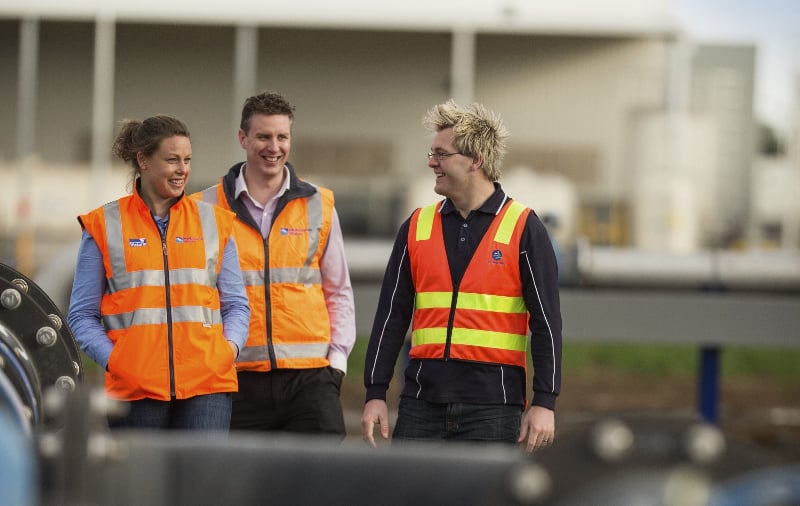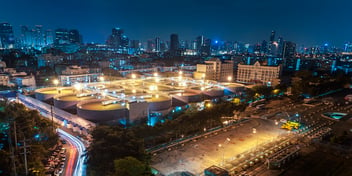Digital twin pilot predicts recycled water quality with 75% accuracy

One Victorian utility recently initiated a digital twin pilot that predicted recycled water quality up to 72 hours in advance with an accuracy rate of 75%, with results of the trial providing valuable insights for recycled water management.
Developed in collaboration with ARQ Group, Melbourne Water's digital twin trial has the potential to advance the utility’s approach to resource management at its Western Treatment Plant, which produces between 5000 to 10,000 ML of Class A recycled water every year.
Melbourne Water Innovation Lead Blair Smith said working towards more efficient and effective recycled water management is an important consideration when it comes to achieving sustainability and water security outcomes.
“We treat around 60% of Melbourne’s sewage at our Western Treatment Plant. Across both of our treatment sites, including the Eastern Treatment Plant, we are the largest producer of Class A recycled water in the country,” he said.
“This water is primarily used for irrigation by nearby farmers and crop producers in the Werribee region. It is also used to irrigate parks, used for firefighting, and it’s increasingly used in households for non-potable purposes.
“The idea is to protect our potable water sources. That water is very precious, we are a growing city, and the more recycled water we can use, the more we can safeguard our other water supplies.”
Smith said the digital twin could enable Melbourne Water to proactively respond to potential water quality issues, ensuring the delivery of safe and reliable recycled water to its customers.
"The pilot provided valuable insights into twin technology capabilities and how it can be used to optimise the treatment processes that delivers high-quality recycled water to our customers and the environment,” he said.
Leveraging Amazon Web Services (AWS) technologies, ARQ Group has provided the expertise and infrastructure to create and maintain the digital twin, enabling Melbourne Water to harness the full potential of this pilot technology into the future.
Predicting interruptions
Melbourne Water’s Western Treatment Plant implements a natural treatment process that starts with a series of lagoons – bacteria breaks down the materials in the wastewater over about 30-35 days, as the wastewater passes from one lagoon to the next.
“At the end of this natural process, we have Class C recycled water. It’s clean enough for us to release into Port Phillip Bay, under strict conditions set by the EPA. But we take that product and further treat it to create Class A recycled water,” Smith said.
“We have very little control over this initial treatment process, because it’s mostly the bacteria that’s doing the work. But there are also factors that are out of our control that can impact our ability to take that Class C water and turn it into Class A.
“One big issue is turbidity. If the lagoons are too turbid, the UV treatment process that produces the Class A water isn’t effective. One of the big factors is weather, particularly wind, which generates waves on the surface of the lagoons, stirring up sediments and increasing turbidity.”
Smith said being able to predict what the quality of the recycled water will be will help the utility provide early warning to customers and retail water companies that Class A recycled water will not be available due to turbidity events.
“Due to the natural process and exposure to weather, we can’t really fix the issue. But we can respond to it and create better planning throughout the supply chain by giving people as much notice as we can about the level of recycled water quality,” he said.
“That means better planning and management of the available resources and better communication with our customers, especially when there is going to be interruption, but also when Class A can be resumed.”
Turbidity twin
The digital twin pilot technology provided real-time monitoring and analysis of various water management parameters, combining historical data, machine learning algorithms and predictive analytics to forecast the quality of recycled water.
“To create the digital twin, we analysed the treatment process and selected the relevant areas connected to turbidity and weather conditions in the lagoons,” Smith said.
“It was about cataloging the relevant data we have available to us. That includes our sensor data, but also external weather forecasting information from the Bureau of Meteorology.
“We used 12 months of our operational and historical weather data, looking at 30 high-turbidity events that happened within that period. We looked at the correlation of those events and through that started to build our predictive models.”
One of the biggest factors in predicting recycled water quality at the Western Treatment Plant is utilising weather forecasts, Smith said, which is directly correlated with the accuracy rate the pilot was able to achieve.
“Weather forecasts decay very quickly; once you start to get beyond four or five days, the accuracy of the weather forecasts decrease,” he said.
“Once we were slipping beyond 75% accuracy in subsequent days, the decay was too high and therefore our predictions were no better than a guess, which wasn’t acceptable.
“But our accuracy rate is actually a bit higher than 75% in the first 24-48 hours. This is the first time we have generated a predictive model using this type of data. This is a really unique use case for us.”
On the horizon
Smith said the development and demonstration of the digital twin technology has shown the business what predictive algorithms can do and how they can be applied to a range of operational processes.
“We are looking at how we can integrate the most valuable parts of the pilot into our business as usual IT systems and tools. We have work underway so that our operators can embed the approach into how they work,” he said.
“There is the potential to refine these models over time, bringing in different data to increase accuracy and how far we can look into the future. There are also now considerations as to whether we extend this type of solution into other parts of the wastewater treatment process.
“But there is certainly also the potential to utilise this approach with other natural assets, like lagoons, urban lakes and waterways, that are not typically modeled in conventional SCADA processes.”
Using digital twins to help achieve operational excellence is great, Smith said, but Melbourne Water is also looking for solutions to some of the water sector’s biggest challenges, like the reduction in emissions, the path to net zero and integrated water management.
“We have a digital engineering roadmap, which is about how we adopt technology. We have set ourselves up for the next generation of digital technology, and this pilot has been helpful for preparing and organising our data to enable us to tap into these types of capabilities,” he said.
“Understanding the type of data we needed to use and in what format was really important for us, particularly in terms of setting ourselves up for future success."


